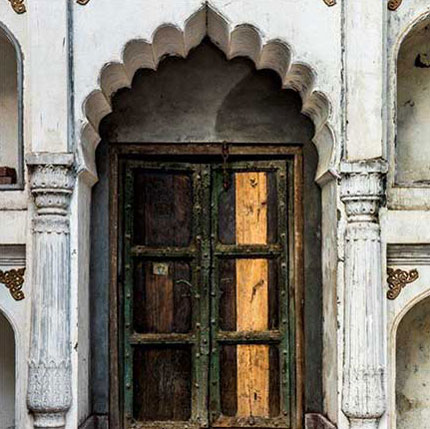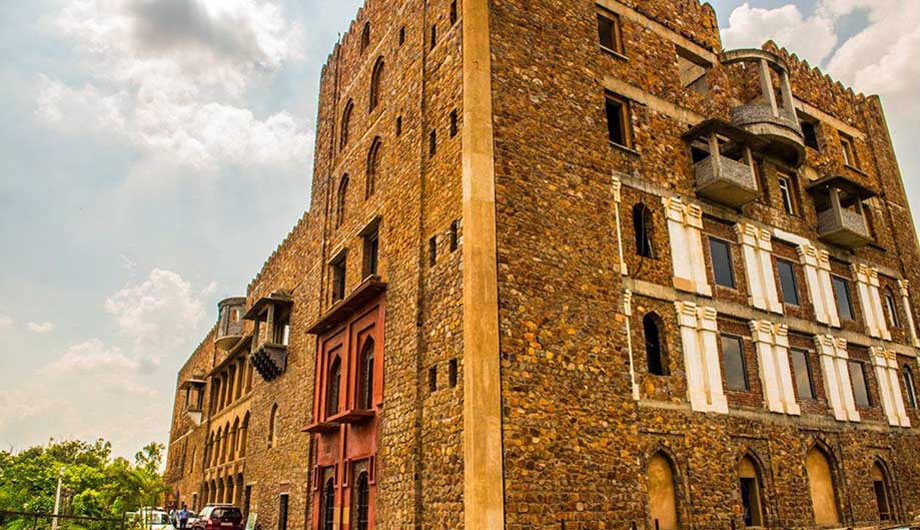Theatre Academy
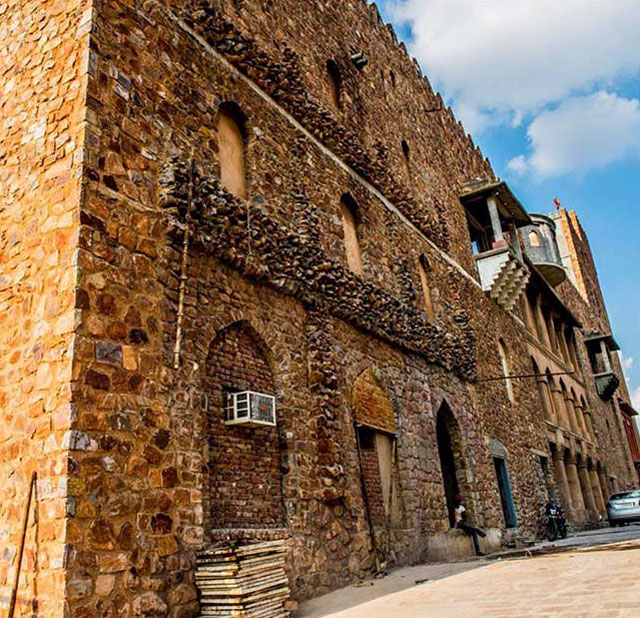
THE PROJECT
Theatre Academy is an academy for the promotion of theatrical arts. It is managed by the NGO Stagedoor, with Padma Shree Aamir Raza Husain and Ms. Virat Husain as patrons.
The building includes some of the following functions:
- An auditorium - a state-of-the-art facility with a capacity for 750 people
- Practice theatres
- Lecture halls
- Banquet spaces
PROJECT HISTORY
The building has been conceived from an era known for excellence in heritage & arts, reminiscent of the rich and opulent lifestyles of the time that co-existed with well-defined value systems.
stats
-
75,000 sq. ft.
Covered area
-
2008
Year of Completion
-
Saket District Centre, New Delhi
Location of project

RESEARCH
We began visiting old monuments of Delhi and spending time with them. We taught ourselves about the small details, construction processes and intent of these buildings through sketching and observing.
The clients had grown up in the royal structures of Lucknow, Ajmer and Delhi, and being descendants of the ruling families of Awadh dynasty, they carried a very fine sense of traditional aesthetics. We therefore had to bring up our skillsets to match with their expectations and perceptions. This journey brought us to a place with them where we started understanding one another, collaboratively giving shape to the architectural elements, fenestrations and articulations.
A very important contributor in the process was the executor. We found a contractor who was working on small buildings in Old Delhi areas, thus possessing a fine knowledge of traditional elements. His expertise prompted us to create complicated & elaborate geometry on the façade.
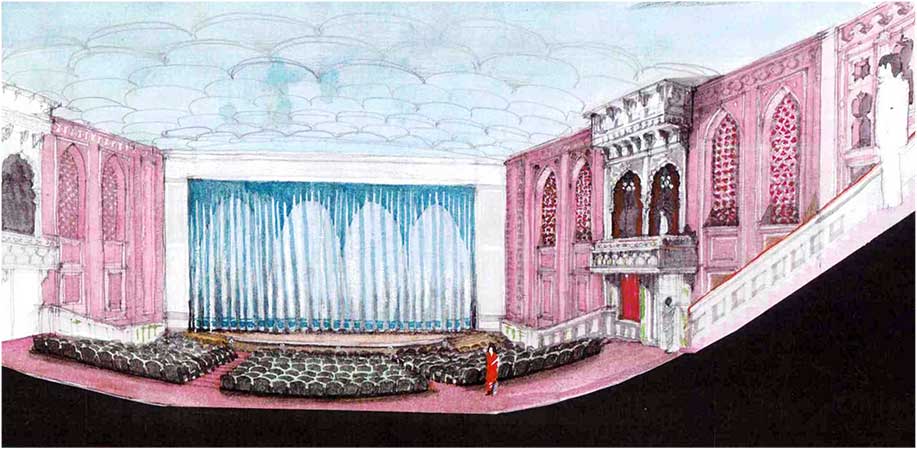
APPROACH
The focal function of the design, the auditorium, with its capacity for 750 people required a large volume and a huge chunk of built-up area. Therefore, submerging it below the ground level helped in optimizing the area and creating architecturally articulated spaces consisting of courts, lobbies, etc. on ground. This also led to an exciting variety and sequence of spaces such that varying relationships between the numerous activities that would be undertaken there, could be explored.

CHALLENGES POSED BY THE BRIEF
To justly express the brief, and achieve the brilliance of the past in aesthetics & function, required a thorough blend of present-day technology and material. Finding such an expression while ensuring it was original, authentic, and practical was a big challenge.
The course of discussions established that to remain authentic, the visual dominance of the original material is of the utmost importance. The architectural features HAD to be used with the same elegance, and built in the same proportion and geometry achieved by the craftsman of the past. Moreover, the idea behind those symmetrical yet organic compositions had to be understood in context of the time they took shape in, and then re-interpreted in a contemporary context.

ELEVATION AND ITS CHALLENGES
We were first contacted by the then newly appointed project management firm to work on the interiors when the structure of the basement was about 90% complete and the pre-stressed roof slab was being cast. Our job profile comprised coordinating all the services and design interiors. To our dismay, we discovered that the project had not been coordinated and managed up to the mark. As such, soon after we came on board, the architect resigned.
We were then asked to take charge of the architectural coordination of the remaining structure as well.
The building elevations proved difficult to handle, with various architectural firms having been hired and let go one after the other when they proved incapable of producing any acceptable solution after struggling for months. It was a grim situation as up until this point, the interiors, building structure, the elevations and the by-laws had been handled as different building components, by different professionals & architects. This led to a disharmony in the overall expression of the building. The construction of the structure was progressing, without proper prior planning or knowledge about the future provisions and external features that it would need to cater to. The bare RCC structure of all the five floors was completed without incorporating any walls. The elevations had not been designed by then and the project got further stalled when the financing agency pulled out.
To be succinct, with no funds, no designed elevations and only the structure standing at site, with the task of designing all interiors, we took control of the project.
The clients thus looked to us for conceiving and synthesizing the elevations as well. We came up with a philosophy and derivative schemes that aligned with their vision and began finalizing the exterior designs. The project resumed on a low note, with very limited funds, presenting a bottom line of achieving the challenging, experimental and unusual building benchmarks within an incredibly low budget.
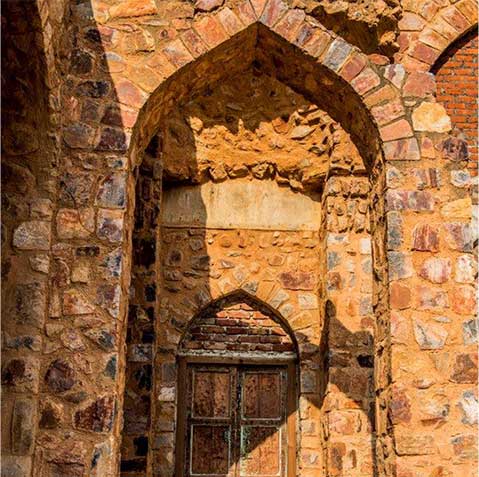
In time, we got down to finalizing the labor contractor but to top things off, the project management firm also walked out, leaving the work solely dependent on the junior site engineer guided by us, with the clients taking care of resourcing the material. We lost a considerable amount of time in making samples of the stone masonries, rejecting almost all the stone contractors in Delhi and NCR before finding the appropriate masons who could understand our intent. A small contractor from Old Delhi came through when it came to brickwork and plasterwork.
We were eventually able to enclose the spaces with stone and brickwork, but in the absence of integral elements like brackets and chhajjas, the façade was far from finished. This, coupled with the depletion of funds, led us to experiment with the idea of using doors and windows from old traditional buildings. The clients and the brickwork contractor hunted for such pieces which ultimately added authenticity and an element of preservation of the jewels of the bygone era.
To support stone masonry on an RCC frame without making the RCC frame visible, especially for a five-story building, was a bold experiment. The joinery and junctions between varied materials needed extra measures to prevent any cracks, visible joints, etc. Moreover, making the entire skin waterproof, without utilizing external coating or even joint painting proved to be another exhausting, but ultimately rewarding challenge.
Project coordination with the client and consultants, with the given strapped time and technical expertise, went much beyond our capacity. However, the project belonged to us and no one had the depth of knowledge of the whole building as we did, therefore the project relied completely on our support for overcoming any and every constraint or challenge. In the mission of salvaging the project from disastrous situations, business earnings and affordability became alien concepts. The only goal here was to create an architectural piece that fulfilled both the client’s and our vision.

As things stand today, the building has commenced function, with tenants such as Innov8 running boutique office spaces here. The auditorium is undergoing final finishing and is expected to begin hosting events in the very near future.
